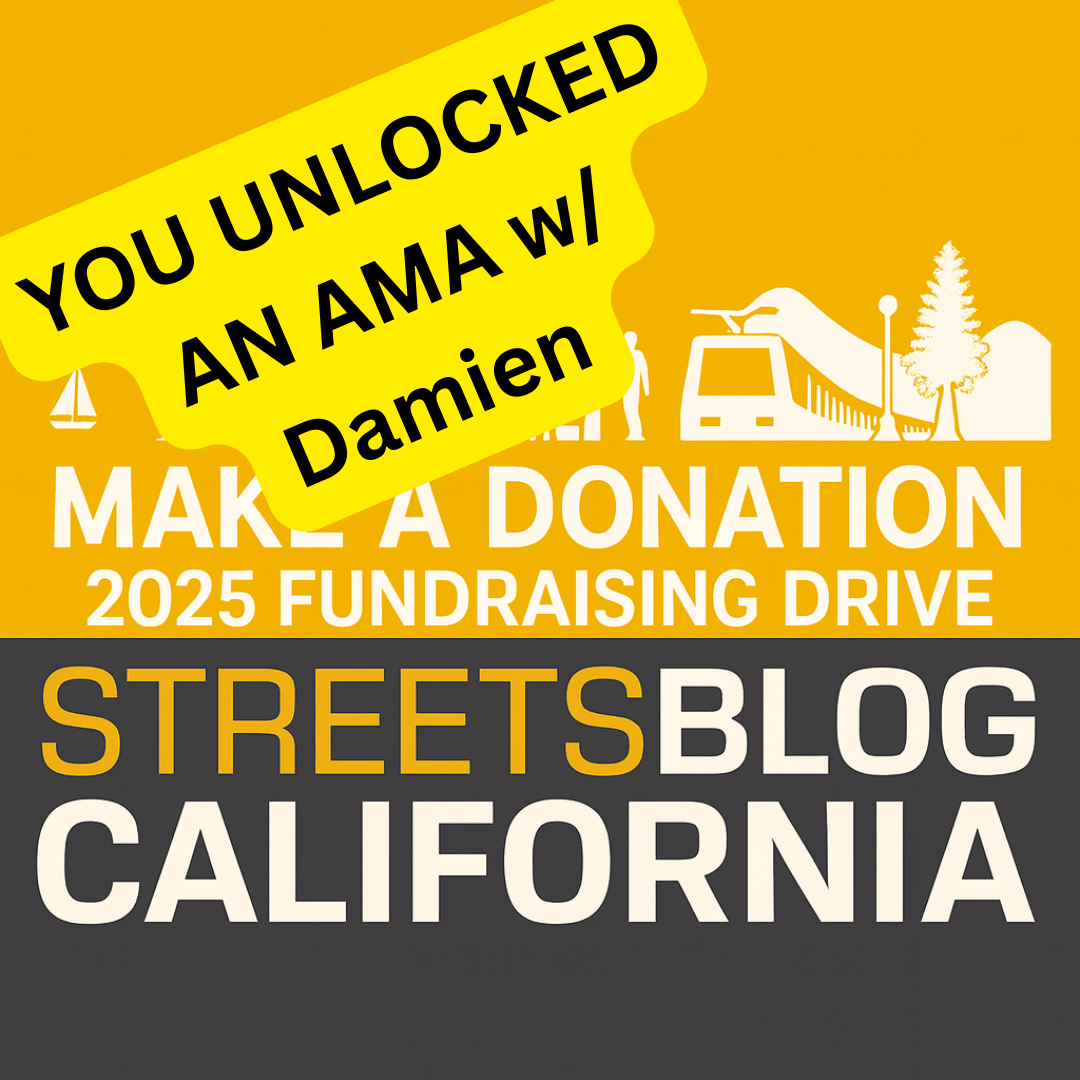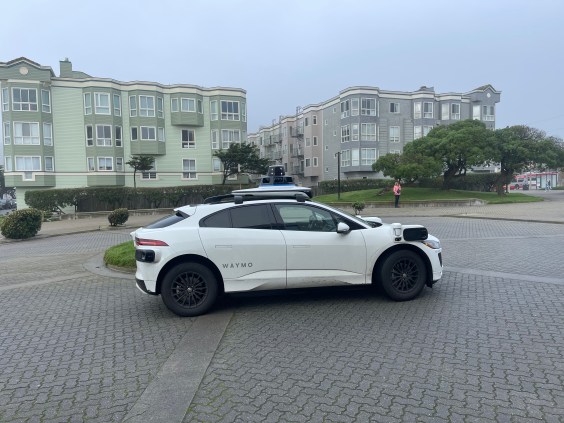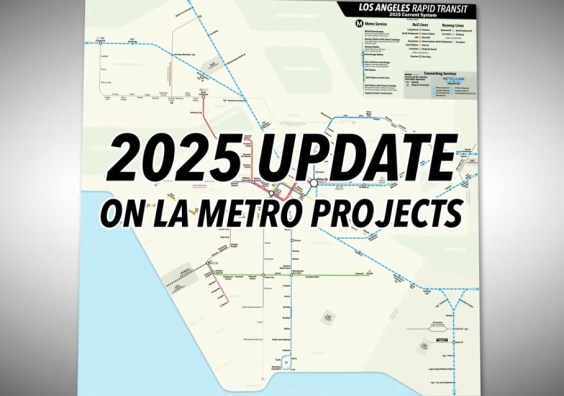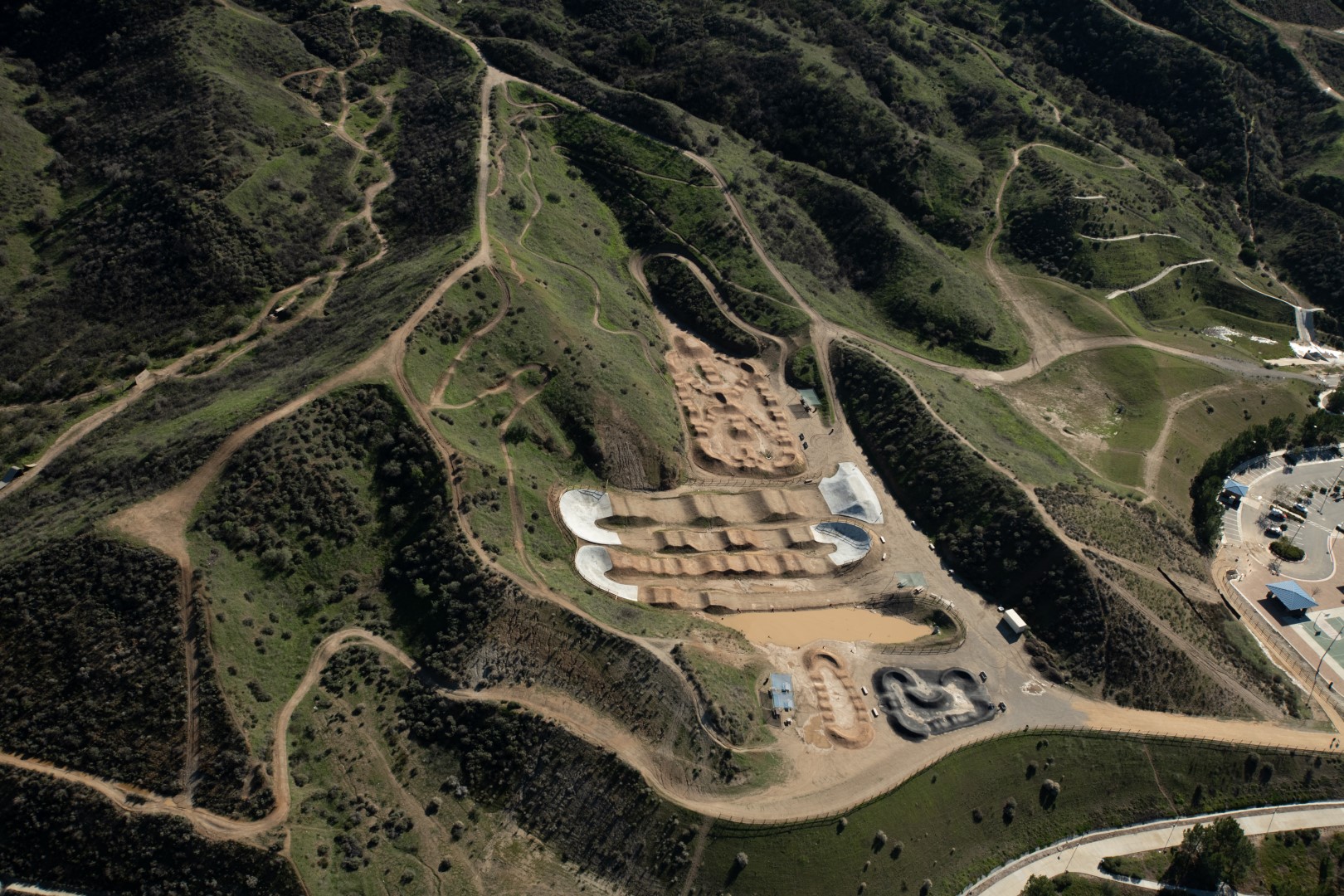On this week’s StreetSmart Podcast, host Damien Newton spoke with UC Berkeley professor Zach Lamb about his team’s new report, A Safety Dilemma, which examines why some fire departments across the country have opposed street redesigns that add bike lanes, bulb-outs, and other safety features.
The research was inspired by a stalled Berkeley project for a protected cycle track that failed to gain fire department approval. Lamb and his team began investigating whether similar conflicts were occurring elsewhere — and found they were. Despite rising traffic fatalities, some fire departments have resisted safer street designs, often citing access or width requirements.
Lamb emphasized that fire departments are not monolithic: chiefs, marshals, unions, and rank-and-file firefighters often have different priorities. Cost of living can also play a role, especially in California, where firefighters frequently commute long distances from the communities they serve.
The study looked at four cities, including Nashville, where strong mayoral leadership helped align fire and planning departments behind multimodal safety. Lamb said that when city leaders make safety a top priority, departments are more likely to cooperate than to obstruct.
Lamb also highlighted Berkeley firefighter Mike Wilson’s call to extend the fire service’s legacy of prevention—once focused on reducing structure fires—to traffic safety. Berkeley’s new Street Trauma Prevention Program embodies that shift, positioning fire departments as proactive partners in crash prevention rather than reactive responders. For more on Wilson’s experiences, check out this article from Streetsblog USA.
“Designing safe infrastructure is the easy part,” Lamb said. “Changing culture is the real challenge.”
The transcript below has been edited for length and clarity.
Transcript:
Damien Newton: In this week’s StreetSmart Podcast, I’m talking with Zach Lamb, a professor at the University of California, Berkeley. He’s been researching why some fire departments across the country have, in the ongoing “war for street space,” positioned themselves as anti-bike or anti–bike lane.
Zach and his team recently hosted a webinar and have a report coming out soon called A Safety Dilemma. I’m going to hand the podcast over to him and let him do most of the talking. Zach, thank you for joining us today.
Zach Lamb: It’s great to be here, Damien. Thanks for having me.
This project grew out of an experience we had here in Berkeley. There was a proposal for a protected two-way cycle track on a popular local commercial street. The project had been designed and was about to go out to bid when it ran aground. The official reason given was that it didn’t get fire department approval—it didn’t meet certain standards for clear width and other required dimensions.
That got us interested in whether this kind of conflict was happening elsewhere, and in the broader relationship between safe streets and fire and EMS response in U.S. cities. We know that in many places, serious injuries and fatalities among pedestrians and bicyclists have increased over the past several years.
In response, many cities have begun investing in safer street designs. But at the same time, we’ve seen growing tension between fire departments—and, to some extent, EMS operations—and those safe streets initiatives.
Damien: California seems to have become one of the states most famous—or infamous—for this, depending on your point of view. In Los Angeles, the fire department’s union spent millions to defeat a ballot measure that would have created more bus and bike lanes.
And up in San Francisco, a firefighter broke ranks on a street project, even doing an interview with Streetsblog San Francisco about why he supported it. We gave him an award for that, but he said he faced backlash from within the department.
Do you think there’s a reason California is getting more attention for this? Or is it just because we’re building more bike lanes right now?
Zach: That’s a great question. I moved to California about five years ago from the East Coast, and one of the first things that struck me—something that strikes many new Californians—is how wide the streets are here.
Even in older cities like Berkeley, the streets are considerably wider than in many other parts of the country. You’d think that would make the geometry problem—how we allocate limited street right-of-way—less severe. But as you said, we’ve still seen a number of these conflicts.
It’s also important to remember this isn’t universal. As you mentioned, that San Francisco firefighter you referenced took a very different stance. There are cases where fire departments are aligning with safe streets efforts.
Damien: Right—and just to clarify, in Los Angeles it wasn’t the department itself, but the union that opposed the measure.
Zach: Exactly. And that distinction matters. One of the things we’re trying to understand is that fire departments aren’t monolithic. There are different parts with different priorities: fire marshals who focus on code enforcement, fire chiefs managing operations, and the rank and file represented by unions.
They don’t always share the same perspective.
One reason these tensions may be particularly visible in California is cost of living. In high-cost cities, firefighters often can’t afford to live where they work. They commute in from outside communities, which can create a disconnect between the people doing the work and the neighborhoods they serve.
Damien: You mentioned different parts of departments having different views. When I was on my local neighborhood council in Los Angeles, we worked on a road diet on Venice Boulevard.
A lot of rank-and-file firefighters and the union opposed it, which I can understand—even if the data doesn’t back up their fears. If you’re driving a fire truck, you want wide lanes, and protected bike lanes and bulb-outs can make the road feel more constrained.
But our fire chief supported the project. He emphasized prevention and long-term safety. Some in the community—and even local media—dismissed that as him just following the city line, saying he couldn’t contradict the councilmember or the DOT. How true do you think that perception is?
Zach: That’s a really interesting dynamic. Fire chiefs have to balance a lot of pressures. They need to maintain credibility with their rank and file, but they’re also part of city administration and have to work with elected leaders and city managers.
We’ve seen similar examples here in Berkeley. Last year, there were competing ballot measures about street safety. The firefighters’ union actually supported the stronger safety-focused version. But when it came to a specific project—the bike lane on Hopkins Street that inspired this research—the acting fire chief sided with city officials who opposed it.
Fire chiefs often operate as political actors. They can’t always take positions that contradict city leadership.
In our research, we conducted four case studies and a national survey to document these conflicts—and, importantly, solutions. We even created what we call a “Conflicts and Solutions Database.”
Many of these disputes never make the press, or if they do, you rarely get the full backstory. So we chose four cities to study in depth.
One of them was Nashville, which has made impressive progress on safe streets under strong mayoral leadership. Their “Choose How You Move” ballot initiative is raising billions for sidewalk, bike, and transit improvements.
The mayor made multimodal safety a core priority, embedding it across city plans. When we spoke with people in Nashville—both in the fire department and in planning—they told us the department may raise concerns about individual designs, but they don’t take an anti–bike lane stance because they don’t want to oppose one of the mayor’s key goals.
That shows the power of leadership. When mayors make safety central to their vision, it sets expectations for collaboration.
Damien: We’re recording this on Friday, the 17th. Streetsblog USA just republished an article from the Vision Zero Journal written by Berkeley firefighter Mike Wilson, who’s been a progressive voice on transportation issues.
He wrote about how fire departments have a remarkable legacy of prevention—reducing fires through prevention efforts—and argued that reducing traffic injuries through street design is a continuation of that same legacy. What do you think about that message?
Zach: I completely agree. And I should say—Mike is a big reason this research exists. He’s been a wise and powerful voice on this issue.
He’s a former first responder, now with Cal/OSHA, and he also has a personal connection—a family member was badly injured in a bike crash here in Berkeley. That experience turned him into a leader in street safety and helped launch Berkeley’s Street Trauma Prevention Program.
Fire departments used to be purely reactive—just putting out fires. But the 1970s America Burning report shifted that mindset toward prevention: enforcing fire codes, requiring smoke alarms, and so on. That shift dramatically reduced structure fires and deaths.
Mike argues we can extend that same prevention mindset to traffic safety. Fire departments already respond to car crashes—so why not work to prevent them, too? That’s the philosophy behind Berkeley’s new program.
It’s too early to say what the long-term impact will be, but the program has already funded a Street Trauma Prevention Coordinator within the fire department to help align street design with safety goals.
Some early signs suggest it’s focusing more on public education—encouraging pedestrians and cyclists to be “more responsible”—which isn’t where the data shows the biggest gains come from. The real improvements come from better street design and reducing dangerous driving.
Still, it’s a step toward bridging divides between departments and building a culture of prevention.
Damien: Thank you for that. And for anyone listening, a link to Mike’s article will be included with this episode.
As we wrap up—anything else you’d like to add, or a question I should have asked?
Zach: I’d emphasize one big takeaway: these issues exist on multiple levels. Designing infrastructure that works for emergency vehicles is the easy part. The harder part is changing culture.
It’s not difficult to design mountable curbs or use flexible posts that allow fire access. The challenge is breaking down the divide that’s grown between safety advocates and fire departments.
Firefighters and EMS personnel respond to horrific crashes—they see the consequences firsthand. From a mental health and worker-safety standpoint, reducing those incidents benefits them too.
There are even cases where safety improvements help emergency response—protected lanes wide enough for emergency vehicles, or connected street grids that improve response times.
Cities that pre-design and pre-approve standard configurations for things like bike lanes and bulb-outs can save time, reduce conflict, and build understanding between departments that might not otherwise communicate much.
Damien: That’s a great point. Thank you so much for your time, Zach. When the report is published, we’ll make sure Streetsblog covers it. And again, for listeners—there’s a link to Mike Wilson’s article in the episode notes. Thanks again, and we’ll be in touch soon.
Zach: Great. Thanks so much, Damien.






